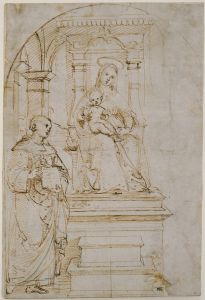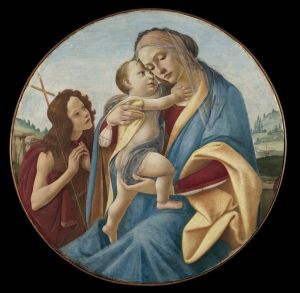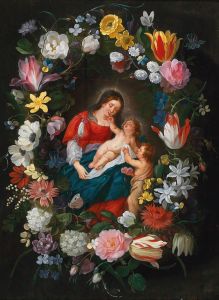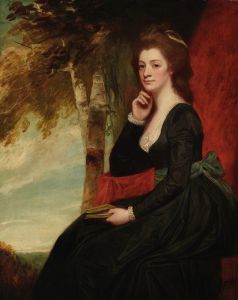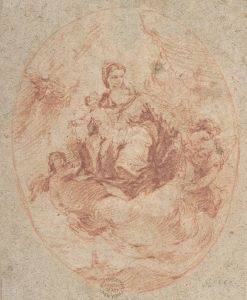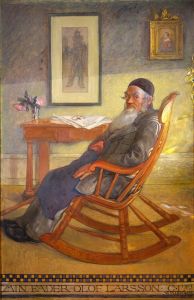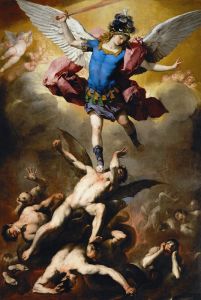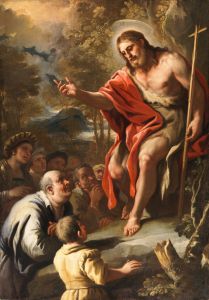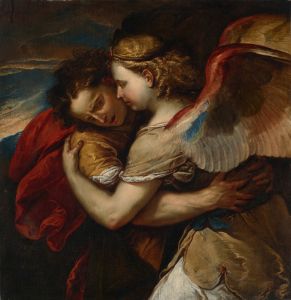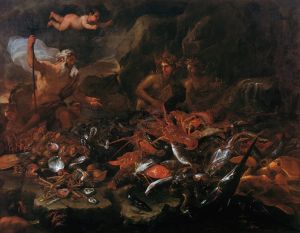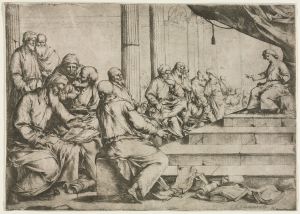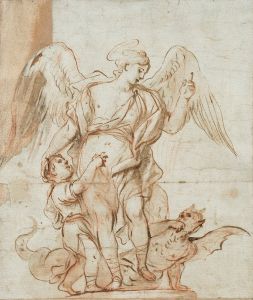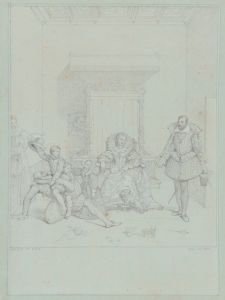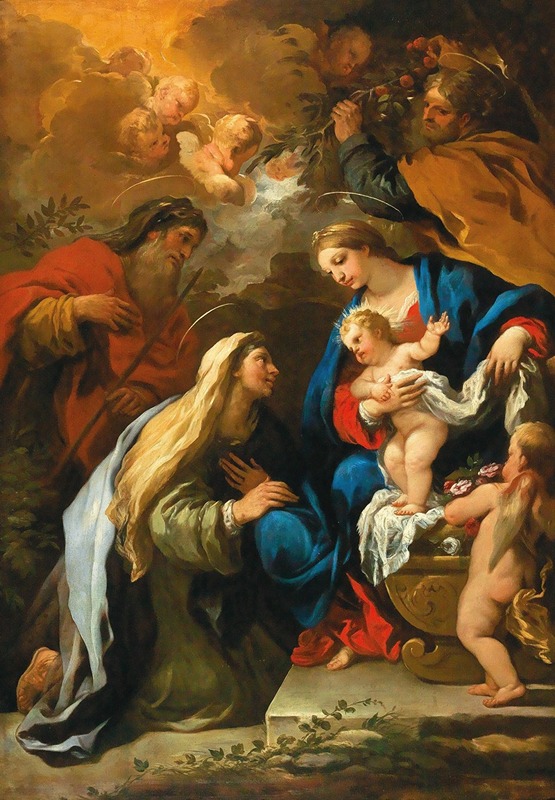
The Holy Family With Saints Anne And Joachim
A hand-painted replica of Luca Giordano’s masterpiece The Holy Family With Saints Anne And Joachim, meticulously crafted by professional artists to capture the true essence of the original. Each piece is created with museum-quality canvas and rare mineral pigments, carefully painted by experienced artists with delicate brushstrokes and rich, layered colors to perfectly recreate the texture of the original artwork. Unlike machine-printed reproductions, this hand-painted version brings the painting to life, infused with the artist’s emotions and skill in every stroke. Whether for personal collection or home decoration, it instantly elevates the artistic atmosphere of any space.
Luca Giordano, an Italian Baroque painter, created "The Holy Family with Saints Anne and Joachim" during the late 17th century. Giordano, born in Naples in 1634, was known for his rapid painting style and prolific output, earning him the nickname "Luca Fa Presto" (Luca, Work Quickly). His work was heavily influenced by the grandiosity and dynamism of the Baroque movement, as well as by the works of earlier masters such as Peter Paul Rubens and Jusepe de Ribera.
"The Holy Family with Saints Anne and Joachim" is a significant example of Giordano's religious compositions. The painting depicts the Holy Family, consisting of the Virgin Mary, the Christ Child, and Saint Joseph, along with Mary's parents, Saints Anne and Joachim. This familial grouping is a common theme in Christian art, symbolizing the sanctity and unity of the Holy Family and their extended lineage.
In the composition, the Virgin Mary is often portrayed holding the infant Jesus, who is the central figure, drawing the viewer's attention. Saint Joseph, typically depicted as an older man, stands or sits nearby, often in a protective or supportive posture. Saints Anne and Joachim, the Virgin Mary's parents, are usually shown in a manner that emphasizes their piety and venerable status. The inclusion of these figures highlights the importance of family lineage and the fulfillment of Old Testament prophecies through the birth of Christ.
Giordano's use of light and color in this painting is characteristic of the Baroque style, with dramatic contrasts between light and shadow creating a sense of depth and volume. The figures are rendered with a sense of movement and emotion, capturing a moment of intimate interaction among the family members. The artist's skillful use of chiaroscuro enhances the three-dimensionality of the figures, making them appear almost lifelike.
The painting also reflects Giordano's ability to blend naturalism with idealism, a hallmark of Baroque art. The faces of the figures are imbued with a sense of divine grace, yet they retain a naturalistic quality that makes them relatable to the viewer. This balance between the divine and the human is a key element of Giordano's religious works.
"The Holy Family with Saints Anne and Joachim" is housed in the Museo del Prado in Madrid, Spain. The museum's collection includes a number of Giordano's works, showcasing his versatility and mastery across different subjects and styles. This particular painting is a testament to Giordano's ability to convey complex theological themes through his art, making them accessible and engaging to a broad audience.
Overall, "The Holy Family with Saints Anne and Joachim" exemplifies Luca Giordano's contribution to Baroque art, highlighting his technical prowess, his innovative use of light and color, and his ability to infuse his compositions with both emotional depth and spiritual significance.





